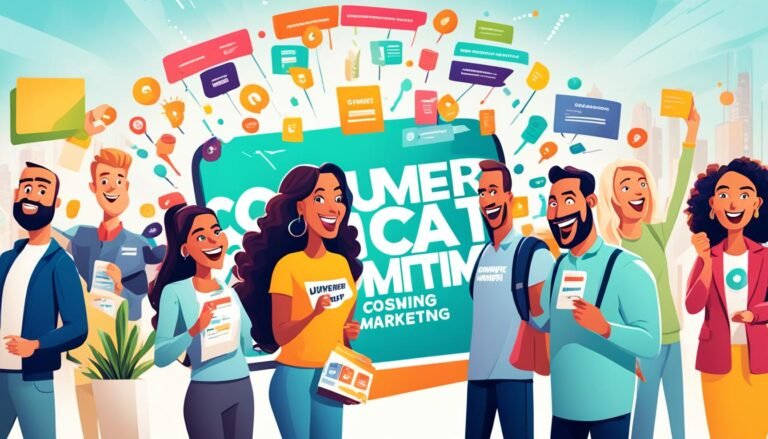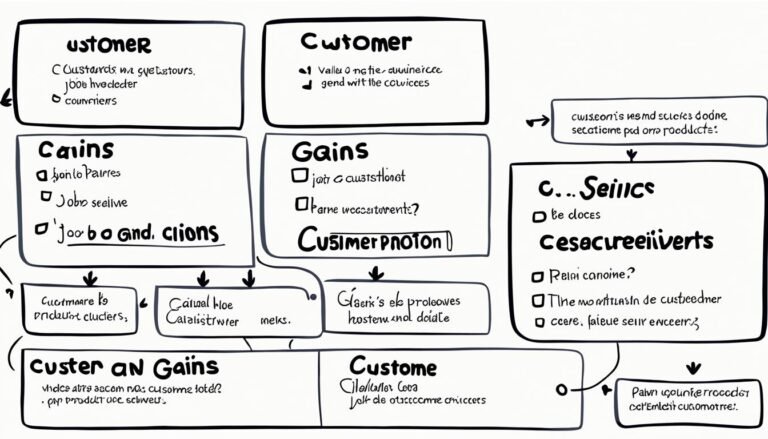Nostalgia Marketing: Tapping into consumers’ fond memories.
Did you know nostalgia marketing can boost purchase intent by up to 50% more than traditional methods? This shows how powerful nostalgia can be for consumers. Today, people are looking for brands that bring back the good old days for comfort.
Brands like Coca-Cola and McDonald’s use nostalgia marketing well. They connect with consumers by tapping into their fond memories. This approach doesn’t just sell products; it evokes emotions that leave a mark. In fact, 80% of older consumers feel a strong bond with brands that use nostalgia effectively.
These campaigns also boost brand recall by 60%. They offer comfort and familiarity. Authenticity is key, with 90% of consumers preferring real connections in these campaigns. This shows how important honesty is in using nostalgia for marketing.
Let’s explore how brands can use this powerful tool to win over their audience and build lasting loyalty.
Key Takeaways
- Nostalgia marketing can increase consumer engagement and brand affinity by up to 70% among older audiences.
- Advertising campaigns driven by nostalgia have a 50% higher purchase intent compared to traditional marketing strategies.
- Approximately 80% of older consumers feel a significant emotional connection with brands that use nostalgia effectively.
- Brands incorporating iconic past symbols in their marketing see a 60% boost in brand recall.
- Authenticity is vital, with 90% of consumers preferring genuine nostalgic connections.
- Nostalgia marketing can lead to a 30% increase in customer loyalty and trust.
What is Nostalgia Marketing?
Nostalgia marketing connects brands with positive past memories to make people feel something deep. It uses familiar cultural references to link past and present, building strong consumer bonds. This method taps into feelings, making people more loyal to the brand.
Definition and Concept
This marketing uses past experiences to create a strong brand message. Brands bring back elements from the past to share memories with their audience. For example, Bacardi celebrated its 150th anniversary by taking consumers back to the late ’50s party culture.
Adobe used Bob Ross to inspire creatives with a calm vibe. These campaigns connect with consumers on a deep level.
Why It Works for Brands
Nostalgia marketing builds emotional bonds. Over 50% of people find comfort in old TV shows and songs from their youth. Brands like Netflix and Airbnb use this trend to their advantage.
For example, Blockbuster teamed up with Airbnb for a ’90s-themed sleepover. This made people more likely to spend money on products and services. A study by the Journal of Consumer Research showed this effect.
By using nostalgia, brands create strong emotional ties that boost loyalty. Campaigns by Adidas and Tesco have been successful by celebrating historical events or family moments. For instance, Adidas released limited edition BJK shoes to honor Billie Jean King’s tennis match, increasing sales by 20%.
Microsoft’s 2013 ad for Internet Explorer also used ’90s nostalgia, went viral, and was nominated for a Webby Award. This shows how emotional branding can make a big impact.
The Power of Nostalgia in Modern Marketing
Nostalgia in marketing connects deeply with people, taking them back to happier times. It makes consumers feel less lonely, happier, and more confident. This is especially true for older people who love to relive old cultural moments. Brands that use these feelings get a stronger hold on their customers.
The Emotional Connection
Emotional marketing is key in using nostalgia. Brands create strong bonds by linking to happy memories. For example, ColourPop’s Twilight collection quickly sold out, showing how nostalgia can boost sales. Geico brought back its Caveman mascot to grab people’s attention again.
Psychological Impact on Consumers
Nostalgia greatly affects how people act as consumers. A study in Frontiers in Psychology found that people pick products that match their values and feelings. This leads to more loyalty when marketing touches on emotional and psychological needs. McDonald’s bringing back the McRib sandwich is a great example of this success.
- McDonald’s return of the McRib sandwich engages customers through nostalgic memories.
- Oh Polly’s collaboration with Bratz leverages 2000s nostalgia to connect with customers.
- Bobby Jack’s vintage Y2K collection targets Millennials and Gen Z using nostalgic apparel.
Using brand storytelling that recalls the past helps companies create memorable experiences. This mix of emotional marketing and storytelling leaves a lasting mark on customers. It strengthens their loyalty and influences their buying choices.
How Social Media Facilitates Nostalgia Marketing
Social media has changed how we use nostalgia in marketing. It acts like a time capsule, keeping memories alive. Brands can use these platforms to make old memories new again. This connects with both old and new fans, creating strong bonds and loyalty.
Digital Immortality of Trends
Now, trends live on much longer thanks to the digital world. Sites like Facebook, Instagram, TikTok, and Twitter let brands share old memories. For example, Coca-Cola brought back Surge soda with a limited release on Amazon. This sparked nostalgia and loyalty in those who remembered it from their youth.
Nostalgia makes people less focused on saving money. They’re more likely to buy things that bring back good memories.
Interactive Campaigns and Engagement
Interactive campaigns are a great way to connect with people through nostalgia. Brands can set up experiences that let users share their stories or join in on challenges. Jollibee’s ‘Kwentong Jollibee: Almusal’ ad is a great example. It touched on family and loss, creating a strong bond with viewers and sparking online talks.
Nintendo’s ‘Two Brothers’ ad also hit the mark by focusing on the joy of playing together. These campaigns don’t just get more people talking. They also make people feel like they belong, which is key for social media marketing.
Brands can listen to what people are saying online about old trends and memories. This helps them make their nostalgia campaigns hit the mark. By mixing old and new stories, brands can stay fresh and make a real impact.
Understanding Your Audience for Effective Nostalgia Marketing
Successful nostalgia marketing needs a deep understanding of what your audience likes and what triggers their nostalgia. Doing thorough market research helps find these special elements that touch different age groups. Brands can then make campaigns that connect deeply with people by using these insights.
Researching Nostalgic Triggers
Finding what triggers nostalgia means looking at historical and cultural events from your audience’s past. Motorola’s Razr comeback and Nintendo’s NES Classic Edition are great examples of how to bring back good memories. By focusing on different age groups, brands can make sure their nostalgic messages hit the mark. Emotional research also shows which memories and icons can stir up the most nostalgia.
Differentiating Generational References
Marketing to different generations means using references that speak to each group. Millennials remember the early days of the internet and the 90s, while Baby Boomers cherish the 60s and 70s. Brands like Coca-Cola used this to their advantage with the “Share a Coke” campaign, reaching people of all ages with personalized messages. Campaigns like ColourPop’s Lizzie McGuire makeup collection also hit the mark with fans in their 20s and 30s.
Using these insights makes your nostalgia marketing not just a look back but a powerful connection to today. It leads to stronger engagement and loyalty to your brand.
Nostalgia Marketing Strategies for Success
Effective nostalgia marketing starts with using elements that bring back fond memories and feelings. This connects the past with today and strengthens bonds with customers.
Incorporate Timeless Symbols
Using timeless symbols is a key strategy for nostalgia marketing. Icons like Converse sneakers or the Volkswagen Beetle are examples of timeless branding. They bring back strong feelings and are known by many, making them great for current marketing trends.
PepsiCo. brought back Crystal Pepsi, appealing to both old and young fans of retro trends. Motorola also made a comeback with its Razr phone, mixing old design with new tech to attract a wide audience.
Using consistent images and themes helps make these campaigns more powerful. Nintendo’s “Two Brothers” ad used stories and flashbacks to touch people’s hearts. Pictures that remind us of the past can make nostalgia marketing more effective.
Blend Past and Present
It’s important to mix old and new in nostalgia marketing campaigns. Adding vintage or retro touches to modern products can attract a wide range of people. The comeback of 90s fashion shows how well this works.
ColourPop is great at combining old and new in their makeup lines. They use modern packaging and trends but keep the classic feel. This makes their products stand out to different ages.
Using “Throwback Thursday” on social media and tapping into big events helps nostalgia marketing reach more people. Ads that make people feel something strong are more likely to be shared. TikTok is great for reaching Gen Z with these strategies.
Mixing the past and present helps brands tap into deep emotional connections. This can lead to more engagement and sales. By telling stories like Nintendo and keeping branding consistent, companies can make their campaigns hit home.
Iconic Nostalgia Marketing Campaigns
Barbie’s first movie and the ongoing Star Wars saga show how well nostalgia marketing works. These campaigns bring back classic brands and connect with both old fans and new ones. They make companies successful and even change their brand image.
The Success of Barbie’s Revival
Barbie’s comeback was huge. Mattel and Warner Bros. made a movie that earned $1.36 billion, showing Barbie’s big impact. It brought back memories for those who loved Barbie as kids and introduced it to new fans. This proves how pop culture marketing can make a big difference.
The Resurgence of Star Wars
Star Wars is another great example of a brand coming back strong. With new movies and shows like “The Mandalorian,” it keeps drawing in fans old and new. Disney mixes old and new stories, making Star Wars popular again. This shows how well planned nostalgia marketing can keep customers interested.
How To Implement Nostalgia Marketing in Your Brand
Brands looking to use nostalgia marketing need to mix creativity with data. Here are steps to help you succeed.
Steps to Create a Nostalgia-Focused Campaign
- Identify Nostalgic Elements: Find things that your audience loves from the past. This could be old trends, catchy slogans, or symbols from certain eras.
- Incorporate Stories and Imagery: Use these nostalgic elements in your stories and pictures. This connects with people’s happy memories.
- Integrate with Modern Trends: Mix old and new trends to keep things fresh and interesting for everyone.
- Leverage Social Media: Share your nostalgic content on platforms like Instagram, Facebook, and Twitter. This encourages people to share and engage with your brand.
- Engage Influencers: Work with influencers who know your audience well. Their support can make your message even stronger.
Using Analytics to Measure Success
After running a nostalgia campaign, it’s important to see how well it did. Marketing analytics are key here. Here’s how to use them:
- Track Campaign Performance Metrics: Keep an eye on things like how many people engaged, how often they shared on social media, and what they said about your ads. People tend to like brands more when they see nostalgic ads.
- Assess Sales Impact: Look at your sales before and after the campaign. Nostalgia can make people pay more for things that remind them of the past.
- Evaluate Customer Feedback: Get feedback from customers through reviews and surveys. Good feedback means people feel a strong connection to your brand and your campaign worked well.
- Utilize Real-Time Insights: Use tools like Google Analytics to see how your campaign is doing right now. This lets you make changes fast to get the best results.
By using campaign performance metrics and marketing analytics in your marketing strategy implementation, your brand can use nostalgia to build strong customer bonds and increase sales.
Examples of Brands Excelling with Nostalgia Marketing
Today, nostalgia marketing is big in ads, as brands use fond memories to connect with people. This approach creates strong emotional bonds, leading to big wins for companies. Here are some top examples of brands that have hit it out of the park with nostalgia marketing.
Coca-Cola’s Timeless Ads
Coca-Cola has been a pro at nostalgia marketing with its classic ads. The “Hilltop” ad, with its catchy “I’d Like to Buy the World a Coke” tune, still gets people feeling good. It shows how Coca-Cola uses shared memories to make people feel close to the brand. By bringing back these iconic ads, Coca-Cola stays fresh in the minds of both old and new fans.
McDonald’s Return of the McRib
McDonald’s McRib sandwich is a prime example of nostalgia marketing in action. Every time it comes back, it creates a buzz. This brings back fans and draws in newcomers who want to try it. McDonald’s mixes nostalgia with a limited-time offer, making people excited and boosting sales.
Pepsi’s Logo Evolution
Pepsi’s logo changes show how to keep up with the times while honoring the past. By updating its logo, Pepsi stays modern but respects its history. This mix of new and old keeps the brand fresh and relevant. It shows a smart grasp of market trends, appealing to a wide audience.
These examples prove that nostalgia marketing is powerful. It connects with people on a deep level and boosts business results. These campaigns show the lasting impact of nostalgia in marketing, keeping it a key way to engage with consumers.
Nostalgia Marketing Benefits for Your Brand
Nostalgia marketing brings many benefits to brands. It strengthens the bond between consumers and brands and helps in brand growth. Brands like Coca-Cola, Microsoft, Lego, and Herbal Essences use fond memories to connect with people. This approach has made Pokémon GO a huge success by mixing old and new elements.
This type of marketing makes brands feel more human and connects the past with today. It’s key in our digital world. Brands that mix old and new elements, like Pokémon GO, really stand out. Keeping up with current trends helps these campaigns reach millennials well.
Statistics show people love nostalgic products:
- 76% of UK consumers are drawn to sweets reminiscent of their childhood.
- 67% of German chocolate buyers favor the same products they enjoyed as children.
- Three-quarters of Canadian confectionery consumers prefer brands they grew up with.
Nostalgia marketing uses emotional connections to increase sales and loyalty. By blending nostalgia into their strategies, brands can boost their value. This approach keeps them relevant and builds lasting loyalty.
The Role of Consumer Behavior in Nostalgia Marketing
In today’s marketing world, knowing how nostalgia affects consumer behavior is key. It greatly influences what people buy and how loyal they are to brands.
How Nostalgia Influences Purchasing Decisions
Nostalgia marketing uses emotions to connect past happiness and comfort to today. Studies show it makes people feel connected to others, which makes them more likely to buy. For example, Millennials love brands that remind them of their past, with 66% choosing to buy from them.
Ads with nostalgic touches also make people remember brands 48% more than ads without them.
Using nostalgic elements in ads makes people think longer about their purchase, taking 12% more time. This is because they remember the good times linked to those brands.
Building Long-Term Brand Loyalty
Nostalgia marketing creates a strong emotional bond with customers, leading to loyalty. It’s a key strategy for brands wanting lasting relationships. In new markets, using nostalgia can boost brand value by 44.6% more than in older markets.
Trust is also a big factor. 78% of consumers trust brands that make them feel nostalgic.
This marketing also makes consumers more patient and loyal. It taps into the need for comfort and familiarity. Brands that use nostalgia well can build strong, lasting connections with their customers.
The Future of Nostalgia Marketing
Nostalgia marketing is always changing, with new trends, tech, and what consumers want. Brands need to use new strategies and be aware of the challenges.
Innovations and Emerging Trends
Recently, tech like AI and AR has changed how brands connect with people through nostalgia. Amazon Prime is testing ad-supported tiers, and the FCC is fighting AI-generated fake robocalls. This makes ads safer for everyone.
AI is also helping brands make ads more interactive and personal. This is key for modern nostalgia marketing. For example, X has started using pre-roll video ads and ads for individual creators. This shows a big change in how ads are made to connect with people.
Events like the pandemic have made people nostalgic for recent times, speeding up the nostalgia cycle. Millennials and Gen Z are feeling nostalgic for the 1990s and early 2000s. This is a big opportunity for brands to tap into these feelings.
The Super Bowl is a big event for advertisers, reaching 123.7 million viewers last year. The cost of ads there shows how powerful nostalgia marketing still is. People are more likely to buy from brands that bring back good memories.
Challenges and Considerations
Brands using new marketing strategies face many challenges. They need to use nostalgia without losing touch with today’s audience. With new tech coming out fast, brands must keep up with changing platforms and what consumers want.
Amazon Prime’s ad-free tier has seen a 25.8% increase in annual rates. This shows the financial side of changing ad models. More brands are using nostalgia, making the market more crowded. This can make it harder for nostalgia campaigns to stand out.
Cultural and generational changes also make it harder to know what nostalgia means to different people. Netflix’s sleeping bag launch is a smart way to mix old and new. It keeps the brand fresh in people’s minds.
Nostalgia marketing might need to change as our way of experiencing nostalgia changes. With fast communication and visual tech, how we see and feel nostalgia is evolving. Brands need to keep up with these changes to stay relevant in the future.
Conclusion
Nostalgia marketing uses powerful feelings and shared memories to build strong connections between brands and people. By adding elements that bring back good memories, marketers can make their campaigns more effective. For example, 50% of Gen Z and 47% of Millennials feel nostalgic about different types of media. This shows how big of an impact nostalgia can have.
Using a brand’s history can also make marketing better. Research by Belk (1991) and Braun-LaTour (2007) shows how nostalgia affects consumer behavior. Brands that mix the old with the new can tell a story that touches consumers. For instance, 54% of Gen Z likes vintage clothing styles, offering a chance for fashion brands to use nostalgia in their marketing.
As things change, using new tools like social media and analytics helps brands stay ahead. Social media is key for Gen Z and Millennials to find new products. Search engines also help them discover products. By mixing new ideas with nostalgia, brands can keep customers coming back. This makes nostalgia a key part of successful marketing strategies. Marketers who use these ideas can build strong bonds with their audience, leading to lasting success.
Source Links
- Nostalgia Marketing: The Power of Memories – True Fit Marketing
- Nostalgia Marketing: How Brands Are Winning With Retro Vibes | Mailchimp
- Nostalgia marketing: How to turn memories into profits
- Nostalgia Marketing: What Is It and Why Is It Hot? | AdRoll
- 22 Examples of Nostalgia Marketing that Make Customers Feel Good
- Thanks for the memories: How to use the power of nostalgia marketing
- Nostalgic Ads Can Reel ‘Em In
- How Nostalgia Marketing Drives Social Media Engagements
- What Is Nostalgia Marketing & Why Is It Effective? – Socinova
- The Psychology of Nostalgia Marketing: Why It Works and How to Use It – AOK Marketing
- The Authentic Power of Nostalgia Marketing | GRIN
- The Power of Nostalgia Marketing: Tapping into the Emotions of Your Audience
- Nostalgia Marketing: A Guide to Connecting with Customers
- Using Nostalgia as a Marketing Tactic | Creatopy
- 42 ads that market nostalgia: examples and best practices
- Top 7 Most Nostalgic Marketing Campaigns of 2023 | Brand Vision
- Nostalgia Marketing and How Brands Recreate a Time From the Past
- Emotional Marketing and Nostalgia in Advertising
- How do businesses use nostalgia marketing to evoke emotions and drive sales?
- The Power of Nostalgia in Marketing Campaigns
- 8 Examples of Brands Who Got Multicultural Marketing Right
- 5 Viral Video Ads Where Nostalgia Played a Crucial Role in Viral Visual Storytelling
- Why Nostalgia Marketing Works So Well With Millennials, And How Your Brand Can Benefit
- Bringing Back the Good Old Days Through Nostalgia Marketing | Mintel
- Nostalgia and consumer behavior – PubMed
- Nostalgia Marketing and Consumer Behavior
- Nostalgia and consumer behavior
- Why Nostalgia Marketing Is A Double-Edged Sword
- Nostalgia marketing is powerful. ‘Nowstalgia’ might be even more compelling.
- The Power of Nostalgia Marketing Techniques
- Conclusions






